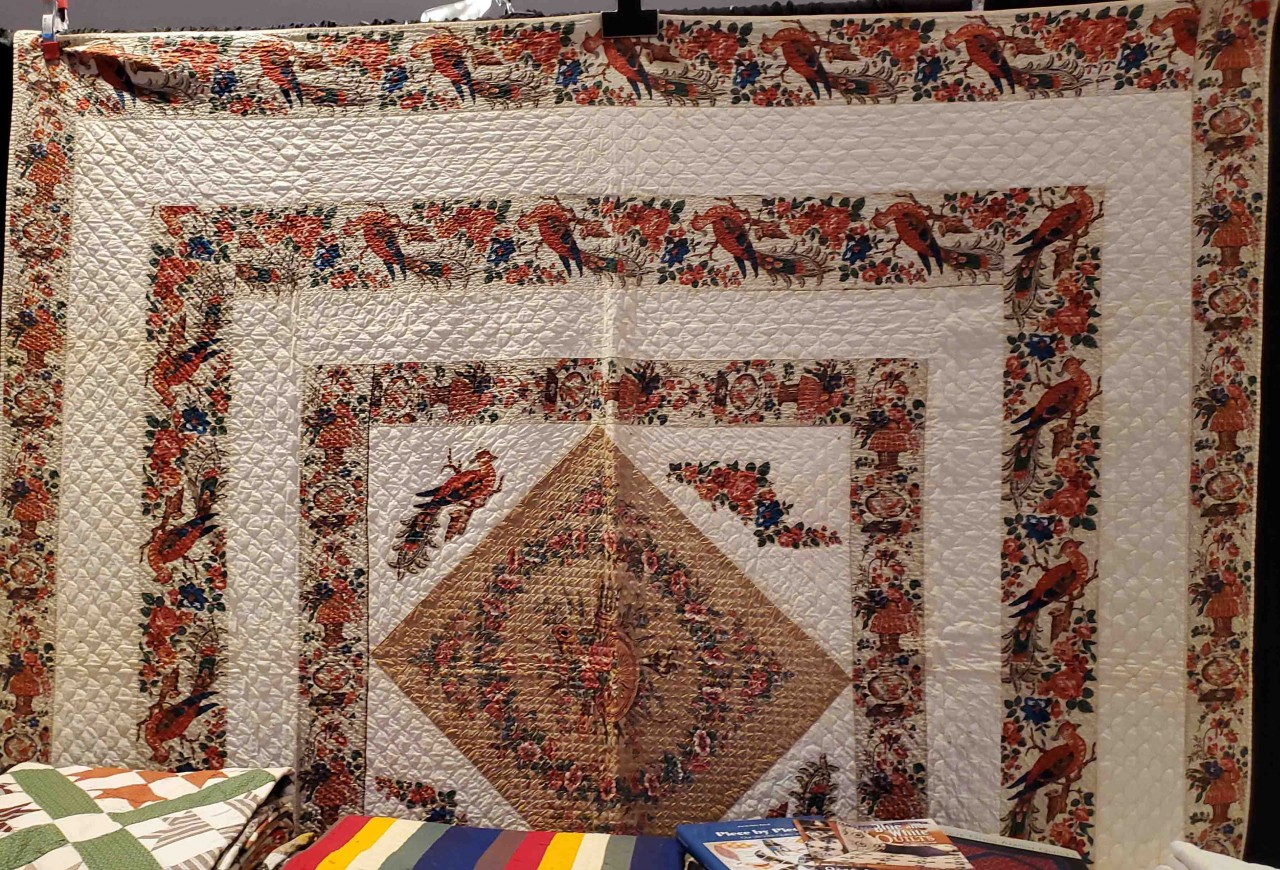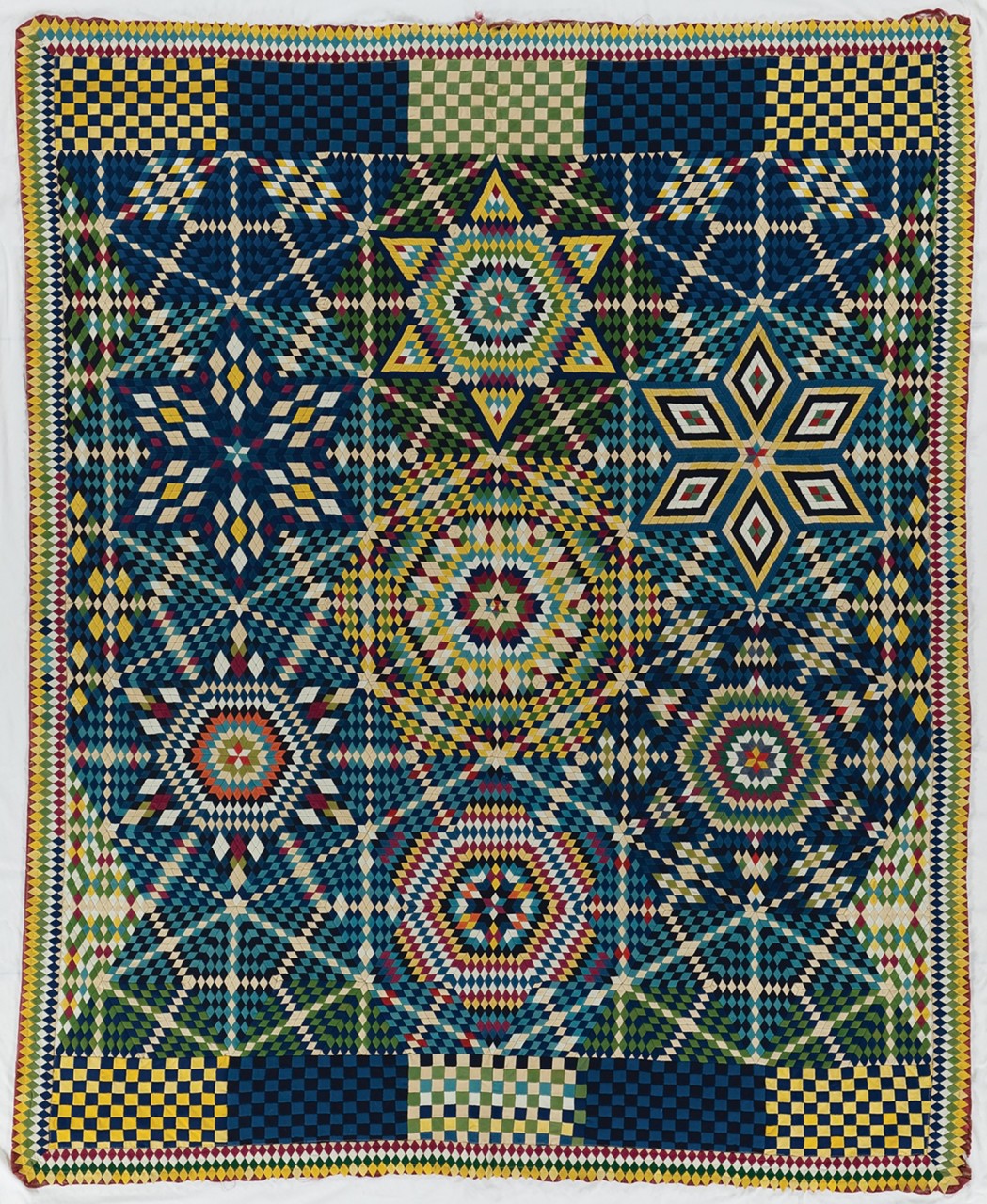
While at the recent AQSG Seminar, the Poos Collection added a new acquisition. At this point with the collection as large as it is, there must be a specific reason to add a quilt to the collection. In this case, there were three solid reasons, plus bonuses. First, the quilt had a bird print in it. As I’ve mentioned before, if it has a bird in it, it is likely coming home. This fabric is what is known as a “Portuguese Print” during the 19th century which came to mean a bright furnishing fabric with wide stripes usually floral but alternating with birds or other wonders. Second the quilt had a center medallion known as Trophy of Arms with a tan background, which the Poos Collection didn’t have. The medallion is #3 in the Waldvogel Chintz...





